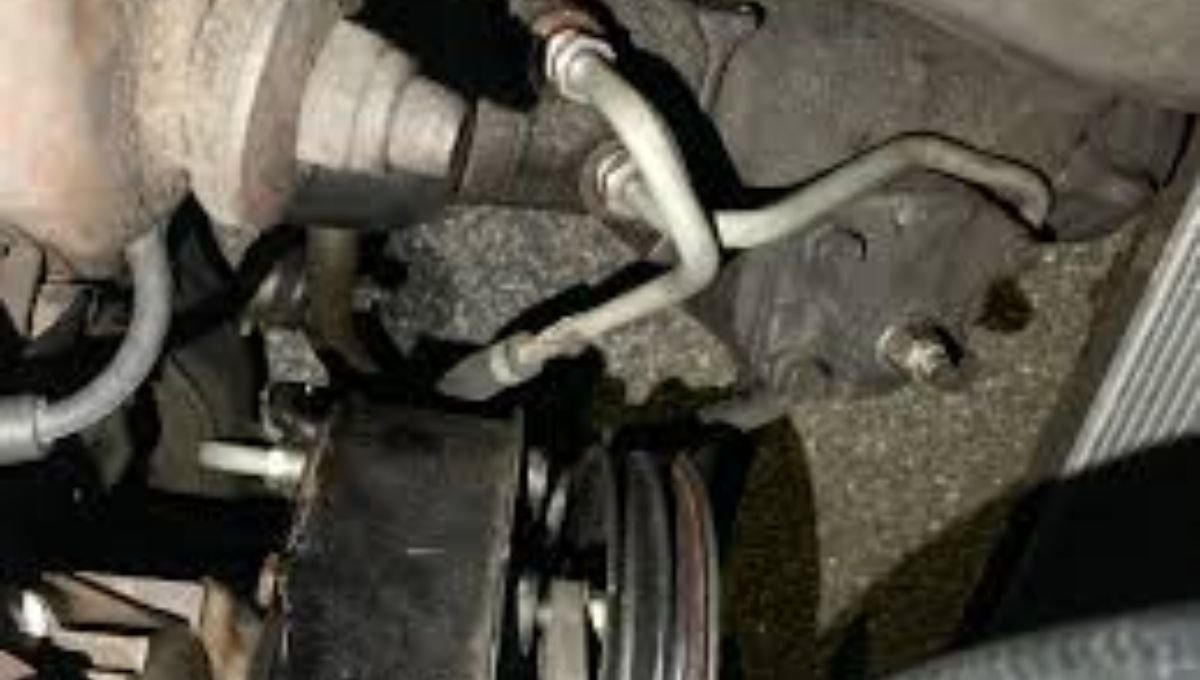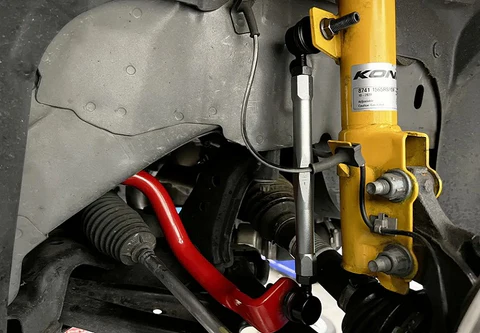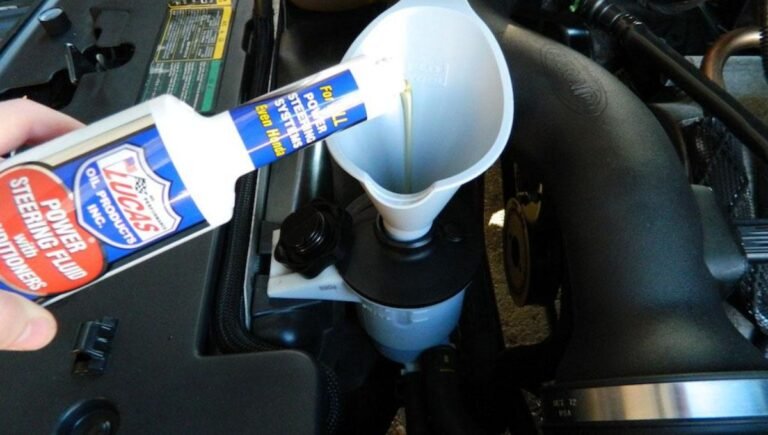Can a Power Steering Pump Lock Up? Avoid Vehicle Mayhem!
Yes, a power steering pump can lock up. This can happen due to a variety of reasons, such as low fluid levels, a damaged pump pulley or a faulty power steering belt.
Power steering pumps are critical components of modern vehicles that provide the necessary hydraulic pressure to assist drivers in turning the wheels. However, like any other mechanical part, they can malfunction and cause serious problems while driving. One of the most common issues with power steering pumps is when they lock up, making it difficult for the driver to steer the vehicle.
This can occur due to low fluid levels, a damaged pump pulley or a faulty power steering belt. In this blog post, we will discuss the causes of power steering pump lock-up and how to prevent it from happening.
Will a Power Steering Pump Lock Up?
Yes, a power steering pump can lock up, and this usually indicates a serious problem that requires immediate attention.
Here are some reasons why a power steering pump might lock up:
- Fluid Contamination: Dirt or debris in the power steering fluid can cause internal damage and lead to the pump seizing up.
- Low Fluid Levels: Insufficient power steering fluid can cause overheating and increased friction within the pump, potentially causing it to lock up.
- Mechanical Failure: Internal components of the pump, such as bearings or the rotor, can wear out or fail, leading to a complete lock-up.
- Belt Issues: A broken or slipping serpentine belt can cause the power steering pump to malfunction and eventually lock up.
- Overheating: Prolonged overheating due to poor cooling or excessive strain can damage the pump’s internal components, leading to a lock-up.
If your power steering pump locks up, you may experience difficulty steering, whining noises, or a sudden loss of power steering assist. It’s crucial to stop driving immediately and have the vehicle inspected by a professional mechanic. Continuing to drive with a locked-up pump can cause further damage to the steering system and other components.
The Mechanics Behind Power Steering

Hydraulic Systems In Action
Hydraulic power steering systems use fluid pressure to assist in turning the steering wheel, enhancing control and maneuverability. When the driver turns the steering wheel, the hydraulic pump pressurizes the power steering fluid, which then transmits force to the steering gear, making it easier to turn the wheels.
- This system relies on a belt-driven pump to generate hydraulic pressure.
- The power steering fluid is crucial for lubricating and cooling the system.
- A network of hoses and valves distributes the pressurized fluid to the steering gear.
Electric Power Steering: A Modern Twist
Electric power steering, or EPS, has become increasingly popular in modern vehicles due to its efficiency and flexibility. Instead of using hydraulic fluid, EPS systems feature an electric motor that directly applies assistance to the steering mechanism.
- The electric motor adjusts its assistance based on the vehicle’s speed and the driver’s steering input.
- EPS systems are known for their energy efficiency and adaptability to various driving conditions.
- By eliminating the need for hydraulic components, EPS systems contribute to reduced maintenance requirements.
Symptoms Of A Failing Power Steering Pump
If you are experiencing difficulties in steering your vehicle, then there is a high chance that your power steering pump is starting to fail. The power steering pump is an essential component of the power steering system that provides hydraulic power to the steering rack or gearbox. If this pump starts to malfunction, it can lead to several symptoms that can affect the drivability of your vehicle.
Whining Noises During Turns
One of the most common signs of a failing power steering pump is a whining noise that occurs when you turn the steering wheel. This noise is usually caused by low power steering fluid levels or a damaged pump. If this noise persists, it is advisable to have your vehicle inspected by a professional mechanic to prevent further damage to your power steering system.
Stiff Steering Wheel
If your steering wheel feels stiff or hard to turn, it could be a symptom of a failing power steering pump. A failing pump will not be able to provide the necessary hydraulic pressure to assist in steering, resulting in a stiff steering wheel. This can make it challenging to control your vehicle, especially at low speeds or when parking.
Erratic Power Steering Assist
Another common symptom of a failing power steering pump is erratic power steering assist. This means that the power steering system may work fine at times, but at other times, it may fail to provide the necessary hydraulic pressure to assist in steering. This can be a dangerous situation, especially when driving at high speeds, as it can lead to loss of control over your vehicle.
If you notice any of these symptoms, it is essential to have your vehicle inspected by a professional mechanic as soon as possible. A failing power steering pump can cause several issues that can affect the safety of your vehicle.
Can A Power Steering Pump Lock Up?
Power steering pump lockup is a serious issue that can occur in vehicles, causing sudden loss of control and steering difficulties. Understanding the causes and consequences of pump failure is crucial for maintaining safe and efficient vehicle operation.
The Reality Of Pump Failure
Power steering pump lockup is a real and potentially hazardous situation that can arise due to various factors. Mechanical wear and tear, inadequate fluid levels, and contamination are common culprits behind pump failure. Regular maintenance and timely inspections are essential for preventing this issue.
Consequences For Steering And Control
When a power steering pump locks up, steering becomes stiff and challenging, making it difficult to maneuver the vehicle. This can lead to unsafe driving conditions and increase the risk of accidents. Prompt attention to any signs of pump lockup is essential for ensuring safe and efficient vehicle operation.
Common Causes Of Power Steering Pump Failure
Power steering pumps play a crucial role in assisting drivers in turning their vehicles with ease. However, like any mechanical component, power steering pumps can experience failure due to various reasons. Understanding the common causes of power steering pump failure can help you identify issues early on and prevent costly repairs. In this article, we will explore three common causes of power steering pump failure: low fluid levels and leaks, belt and pulley problems, and wear and tear over time.
Low Fluid Levels And Leaks
One of the primary reasons for power steering pump failure is low fluid levels or leaks in the system. The power steering pump relies on a specific amount of fluid to function properly and provide the necessary hydraulic pressure. When the fluid levels are low, it puts extra strain on the pump, leading to premature wear and potential failure. Additionally, leaks in the power steering system can cause fluid loss, resulting in inadequate lubrication and increased friction. Common signs of low fluid levels or leaks include difficulty in turning the steering wheel, whining or squealing noises, and visible fluid puddles underneath the vehicle.
Belt And Pulley Problems
The power steering pump is driven by a belt connected to the engine’s crankshaft pulley. If there are issues with the belt or pulley, it can affect the performance of the power steering pump. A loose or worn-out belt may slip, causing the pump to work inefficiently or not at all. Similarly, a damaged or misaligned pulley can lead to excessive vibrations or noise, indicating potential power steering pump problems. Regular inspection and maintenance of the belt and pulley system can help prevent these issues and ensure the proper functioning of the power steering pump.
Wear And Tear Over Time
Over time, power steering pumps can experience wear and tear due to constant use and exposure to various elements. The internal components, such as the rotor, vanes, and seals, can deteriorate, leading to decreased pump performance or complete failure. Additionally, contaminants, such as dirt or debris, can accumulate in the power steering fluid, causing damage to the pump’s internal parts. Regular fluid flushes and filter replacements can help mitigate the effects of wear and tear, prolonging the life of the power steering pump.
By understanding the common causes of power steering pump failure, you can take proactive measures to maintain your vehicle’s steering system. Regular fluid checks, inspections of belts and pulleys, and timely maintenance can prevent power steering pump problems and ensure a smooth and safe driving experience.
Preventative Measures For Power Steering Health
Regular maintenance and care are essential for keeping your power steering system in good health. By following a few simple preventative measures, you can avoid potential issues and ensure that your power steering pump does not lock up unexpectedly. Here are some steps you can take to maintain your power steering system:
Regular Fluid Checks And Changes
Checking and changing your power steering fluid regularly is crucial for the overall health of your power steering system. Clean and adequate fluid levels help to keep the pump running smoothly, preventing any potential lock-up. Follow these steps to ensure your power steering fluid is in top condition:
- Locate the power steering fluid reservoir under the hood of your vehicle.
- Remove the cap and use a dipstick or the reservoir’s markings to check the fluid level.
- If the fluid is low, add the manufacturer-recommended fluid until it reaches the proper level.
- If the fluid appears dirty or contaminated, it is advisable to have it flushed and replaced by a professional.
Belt Maintenance And Replacement
The power steering pump relies on a belt to function properly. Over time, belts can become worn, cracked, or loose, leading to potential lock-up issues. To prevent this, it is important to regularly inspect and maintain the belt. Here’s what you need to do:
- Inspect the power steering belt for any signs of wear, such as cracks, fraying, or excessive looseness.
- If the belt shows any signs of damage or wear, it should be replaced immediately.
- Ensure that the belt is properly tensioned according to your vehicle’s specifications.
- Regularly clean the belt to remove any debris or buildup that could affect its performance.
Routine Steering System Inspection
Regularly inspecting your steering system can help identify potential issues before they lead to a power steering pump lock-up. Follow these steps to ensure the overall health of your steering system:
- Check for any fluid leaks around the power steering pump or hoses.
- Inspect the steering components for any signs of wear or damage, such as loose connections or worn-out bushings.
- Listen for any unusual noises while turning the steering wheel, as they may indicate a problem.
- If you notice any issues during the inspection, it is recommended to have your vehicle inspected by a qualified mechanic.
By following these preventative measures, you can maintain the health of your power steering system and minimize the risk of a power steering pump lock-up. Regular fluid checks and changes, along with belt maintenance and routine inspections, will help ensure a smooth and reliable steering experience.
What To Do If Your Power Steering Locks Up
If you find yourself in a situation where your power steering pump locks up, it can be a daunting and potentially dangerous experience. However, knowing what steps to take can help you regain control of your vehicle and address the issue effectively.
Immediate Steps To Regain Control
When your power steering locks up, the first thing to do is to stay calm and avoid panicking. Firmly grip the steering wheel and try to steer the vehicle to a safe location, preferably off the road. Turn on your hazard lights to alert other drivers of the situation.
Seeking Professional Help
After safely stopping your vehicle, it is crucial to seek professional assistance. Contact a reputable mechanic or towing service to have your vehicle inspected and repaired. Attempting to drive with a locked power steering pump can lead to further damage and compromise your safety.
Temporary Fixes Vs. Permanent Solutions
While it may be tempting to search for temporary fixes online, it’s important to prioritize permanent solutions. Temporary fixes such as adding power steering fluid or using additives may provide a quick remedy, but they often mask underlying issues. Consulting with a qualified mechanic will ensure that the root cause of the problem is properly addressed, leading to a long-term solution.
Repair Or Replace: Deciding The Fate Of Your Pump
Power steering pump lock-up can cause significant issues. Assessing the damage is crucial.
Assessing The Damage
Check for noise, stiff steering, and leaks to determine damage extent.
Cost Analysis Of Repair Vs. Replacement
Repair cost varies depending on damage; replacement may be more cost-effective.
The Role Of Warranties And Insurance
Consider warranties and insurance coverage for repair or replacement costs.
Staying Safe On The Road: Tips And Tricks
Staying Safe on the Road: Tips and Tricks
Understanding Your Vehicle’s Steering System
Regularly check the power steering pump for issues.
Loss of power steering can lead to accidents.
Driving Techniques For Steering Failures
Keep a firm grip on the steering wheel.
Slow down and pull over safely if steering fails.
The Importance Of Regular Vehicle Check-ups
Schedule routine maintenance checks for your vehicle.
A well-maintained steering system ensures safety.
Future Of Steering: Innovations To Prevent Lock-ups
The future of steering is rapidly evolving to prevent lock-ups in power steering pumps.
Advancements In Steering Technology
New steering technologies enhance safety and reliability, reducing the risk of lock-ups.
Systems like electric power-assisted steering offer precise control and quicker response times.
Smart Vehicles And Predictive Maintenance
Smart vehicles use sensors to detect potential issues before a lock-up occurs.
Predictive maintenance schedules ensure steering components are regularly checked and maintained.
Conclusion
Ultimately, a power steering pump can indeed lock up, causing steering issues. Regular maintenance and timely repairs can prevent such failures. Stay vigilant for warning signs to avoid potential hazards on the road. Keep your power steering system in top shape for a smoother driving experience.

Specializes on car underchassis & power steering repair. We have experienced mechanic to attend all your underchassis & power steering repair needs.




